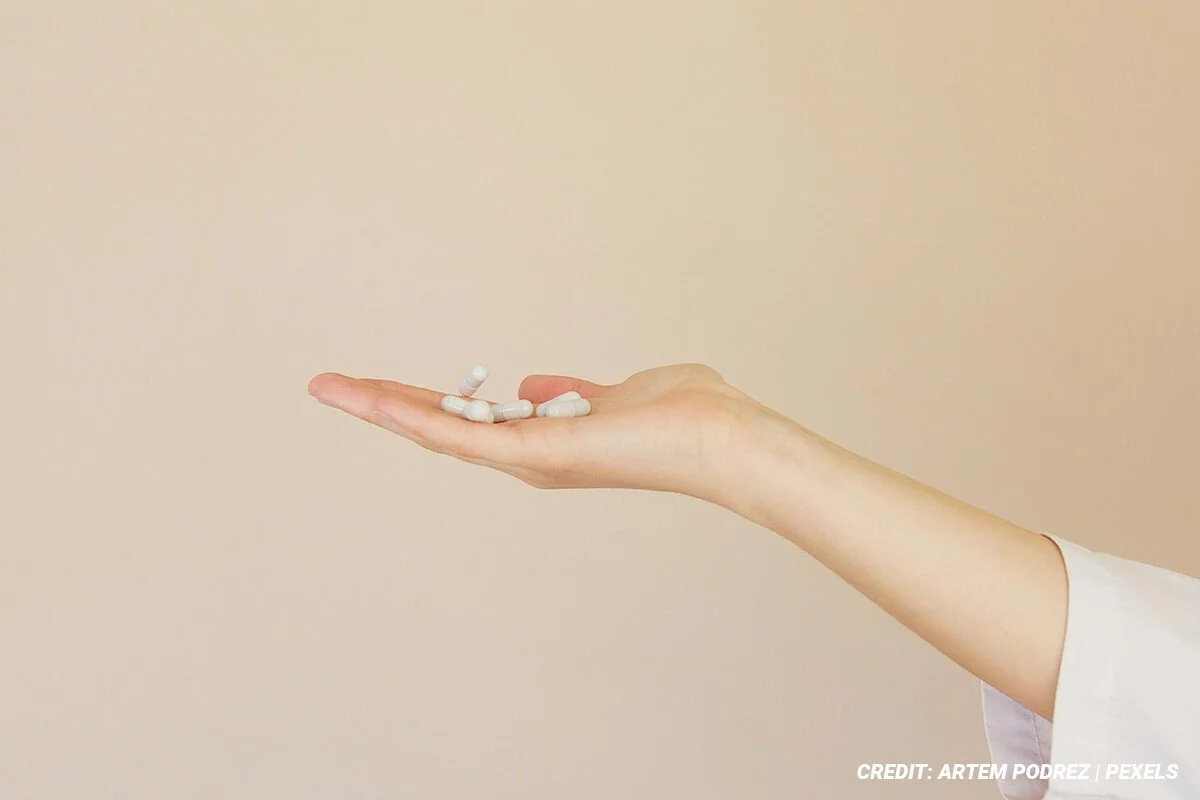For many who experience pain on the regular, the immediate instinct is to reach for a painkiller, a quick fix to quell the discomfort and resume normalcy. While undeniably effective in providing temporary relief, this reliance on pharmaceuticals often overlooks a crucial truth: painkillers aren’t always the answer.
They can mask symptoms, carry side effects, and fail to address the root cause of pain, leaving individuals in a perpetual cycle of discomfort and dependency.
There are limitations of a purely pharmaceutical approach to pain management. We will look also into a holistic alternative, exploring the diverse and effective avenues available for pain relief right here in Toronto.
The Limitations of the Pill: Why Painkillers Fall Short
The widespread availability and perceived convenience of painkillers have made them a cornerstone of pain management for decades. Non-steroidal anti-inflammatory drugs (NSAIDs) like ibuprofen, acetaminophen (Tylenol), and stronger opioid medications are routinely prescribed for a vast array of conditions, from minor headaches to severe post-surgical pain. While their immediate analgesic effects are undeniable, a closer look reveals several significant drawbacks:
Symptom masking. Perhaps the most critical limitation is that painkillers primarily mask symptoms rather than address the underlying cause of pain. Imagine a car alarm blaring. You could pull the fuse to silence it, but the underlying problem—perhaps a faulty sensor or an attempted break-in—remains unaddressed. Similarly, pain is a signal from the body that something is wrong. By simply silencing this signal, we risk overlooking crucial information that could lead to effective, long-term solutions.
Side effects. Even over-the-counter painkillers come with potential side effects. NSAIDs can cause gastrointestinal issues, kidney problems, and increase the risk of cardiovascular events with prolonged use. Acetaminophen, while generally safe at recommended doses, can lead to liver damage if abused. Opioids, while highly effective for severe pain, carry a significant risk of addiction, withdrawal symptoms, respiratory depression, and constipation, among other serious side effects. Toronto, like many North American cities, has grappled with the opioid crisis, highlighting the dire consequences of over-reliance on these powerful drugs.
Tolerance and dependence. With continued use, the body can develop a tolerance to painkillers. A high tolerance means you require higher and higher doses to achieve the same effect. This can lead to physical dependence, where the body experiences withdrawal symptoms if the medication is stopped abruptly. In the case of opioids, this dependence can quickly escalate into addiction, profoundly impacting an individual's life and the healthcare system.
Ineffectiveness for chronic pain. For many forms of chronic pain, particularly neuropathic pain or fibromyalgia, conventional painkillers often prove ineffective or provide only minimal, temporary relief. This leaves sufferers in a frustrating cycle of trial and error, often experiencing despair as their pain persists despite medication.
No focus on healing. Painkillers do not actively promote healing or address the dysfunctional mechanisms contributing to pain. They offer temporary respite, but the underlying issue, be it inflammation, nerve compression, muscle imbalance, or psychological stress, continues to fester.
Embracing a Holistic Paradigm for Lasting Relief
A holistic approach to pain management recognizes that pain is a complex, multifaceted experience influenced by physical, emotional, social, and environmental factors. It moves beyond the simplistic “pain = injury = pill” equation and instead seeks to understand the individual as a whole, addressing the root causes of pain and empowering them with tools for self-management and long-term well-being.
1. Manual Therapies
Often, pain stems from musculoskeletal imbalances, restricted movement, or fascial tension. Manual therapies, performed by skilled practitioners, can be incredibly effective in restoring proper function and alleviating pain.
Physiotherapy. Toronto boasts numerous highly qualified physiotherapists who utilize a combination of exercise, manual therapy, education, and modalities like ultrasound or electrotherapy to improve movement, reduce pain, and prevent re-injury. They help individuals strengthen weak muscles, improve flexibility, and correct poor posture, all of which contribute to pain relief.
Chiropractic care. Chiropractors focus on the relationship between the spine and the nervous system. Through spinal adjustments and other manual techniques, they aim to restore proper spinal alignment, reduce nerve irritation, and improve overall body function, often providing significant relief for back pain, neck pain, and headaches.
Registered massage therapy. More than just a luxury, therapeutic massage can be a powerful tool for pain management.
Tui na. This ancient Chinese therapeutic massage technique goes beyond simple relaxation. It employs a variety of hand techniques to push, knead, press, and rub the body's energy channels (meridians) and acupoints. Tui Na aims to stimulate the flow of Qi (life energy) and blood, release muscle tension, and promote natural healing. It is particularly effective for musculoskeletal pain, headaches, and digestive issues.
Deep-tissue massage. This specific form of massage targets deeper layers of muscle and connective tissue. By applying sustained pressure and slow, deliberate strokes, deep-tissue massage can break down adhesions, release chronic muscle tension, and reduce inflammation, making it highly beneficial for chronic pain conditions, postural problems, and recovery from injury.
2. Traditional Chinese Medicine (TCM)
TCM, with its rich history spanning thousands of years, offers a comprehensive framework for understanding and treating pain. Beyond tui na, other key components of TCM provide profound benefits:
Acupuncture. This is perhaps the most well-known aspect of TCM. It involves inserting thin needles into specific points on the body. This stimulates the nervous system, releases endorphins (natural painkillers), and modulates inflammatory responses, effectively reducing pain and promoting healing. It is widely recognized for its efficacy in treating various pain conditions, including back pain, neck pain, osteoarthritis, and especially for headache and migraine relief.
Herbal medicine. TCM utilizes a vast pharmacopeia of natural herbs, often combined into customized formulas to address specific pain patterns and underlying imbalances. These herbs can possess anti-inflammatory, analgesic, muscle-relaxing, and circulation-boosting properties, offering a natural and often gentler alternative or complement to pharmaceutical interventions.
Cupping and gua sha. These techniques involve creating suction on the skin (cupping) or scraping the skin with a smooth tool (gua sha) to promote blood flow, release stagnant energy, and reduce muscle tension and pain. They are particularly effective for muscle soreness, back pain, and cold-related pain.
3. Mind-Body Connection
Pain is not solely a physical phenomenon. It is deeply intertwined with our emotions, thoughts, and stress levels. Chronic pain can lead to anxiety, depression, and fear of movement, creating a vicious cycle that perpetuates discomfort. Holistic pain management integrates mind-body practices to address these psychological dimensions:
Mindfulness and meditation. These practices cultivate present moment awareness, allowing individuals to observe their pain without judgment and develop a sense of detachment from it. Regular mindfulness can reduce perceived pain intensity, improve coping mechanisms, and alleviate stress, which often exacerbates pain.
Yoga and tai chi. These gentle forms of exercise combine physical postures, breathing techniques, and meditation. They improve flexibility, strength, balance, and body awareness while simultaneously reducing stress and promoting relaxation. The controlled movements and focus on breath can significantly reduce chronic pain, especially in the back and joints.
Cognitive behavioural therapy (CBT). A type of psychotherapy, CBT helps individuals identify and challenge negative thought patterns and behaviours related to pain. By reframing their perception of pain and developing coping strategies, CBT can empower individuals to manage their pain more effectively and improve their quality of life.
Clinical hypnosis. Under the guidance of a trained therapist, clinical hypnosis can help individuals enter a relaxed state of focused attention, where they are more receptive to suggestions. It can be used to alter pain perception, reduce anxiety, and promote relaxation, offering a non-pharmacological option for pain relief.
4. Nutritional Support and Lifestyle Adjustments
What we eat and how we live significantly impact our inflammatory response and overall pain levels.
Anti-inflammatory diet. Emphasizing whole, unprocessed foods, fruits, vegetables, lean proteins, and healthy fats while limiting processed foods, sugar, and unhealthy fats can significantly reduce systemic inflammation, a major contributor to many pain conditions.
Adequate sleep. Poor sleep quality can exacerbate pain and hinder the body’s natural healing processes. Prioritizing restorative sleep is crucial for pain management.
Stress management. Chronic stress floods the body with cortisol, a hormone that can increase inflammation and pain sensitivity. Incorporating stress-reducing activities like hobbies, spending time in nature, or connecting with loved ones is essential.
Ergonomics. For those experiencing pain related to work or daily activities, optimizing posture and workstation ergonomics can prevent strain and reduce discomfort.
Putting It All Together
The key to implementing holistic pain management in your life lies in adopting a collaborative approach, working with a team of healthcare professionals to develop a personalized plan tailored to your specific needs and pain presentation.
Start by consulting with your family doctor to rule out any serious underlying conditions. Discuss your concerns about reliance on painkillers and express your interest in exploring holistic options. Your doctor can then provide referrals to specialists or holistic practitioners.
Our pain clinic in Toronto offers registered massage therapists, acupuncturists, and other practitioners under one roof. This can streamline your care and ensure a cohesive approach to your pain management.
Reclaiming a Life Beyond Painkillers
Lasting pain relief doesn’t have to be solely dependent on a pill bottle. By embracing a holistic perspective, you can tap into a rich tapestry of ancient wisdom and modern therapeutic techniques that address the root causes of pain, foster healing, and empower you to live a life free from the constraints of chronic discomfort.
From the therapeutic touch of tui na massage and deep tissue massage to the ancient art of acupuncture for profound headache and migraine relief, the options we offer are vast and effective.
True healing comes not from masking symptoms but from understanding, nurturing, and empowering your body’s remarkable capacity to heal itself. Embrace the holistic journey, and discover a life where pain is no longer the defining narrative, but merely a chapter on the path to enduring health and vitality.
Tired of the pain and ready to try Tui Na in Toronto? Contact Tui Na Massage Therapy and Head Pain Clinic Toronto at 416-532-9094 or email us at info@totalwellnesscentre.ca.



